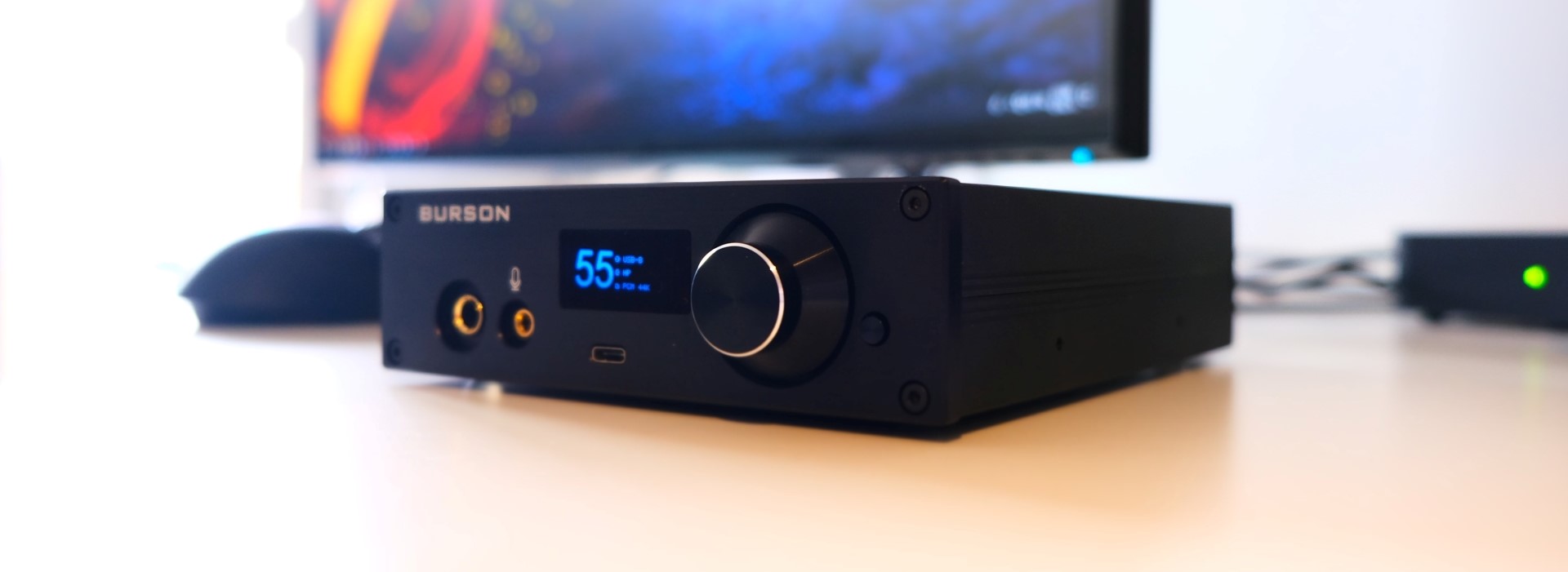
Disclaimer : The Burson Playmate was sent to us free of charge in exchange for our honest review. We thank team Burson Audio for that!
Our video review is right here:
Burson forges are running hot these past days. The fire just settled down around the Play, Fun and Bang, all released not too long ago, that I still consider them fresh products. In my opinion Play was an amazing all-in-one DAC and headphone amp punching way above its league. However, nothing is perfect and Play had its quirks that I mentioned in my Play review.
Play never really shined with sensitive IEMs, background noise and hum plagued it for all multi-BA IEM users, lack of a gain switch was a real pain and made it almost unusable with IEMs. Not to mention the already dated ES9018 DAC chip and did I mention that it had only one digital input? Common Burson, you can do better than that.
A big surprise came about one month ago when I was greeted with 2 announcements from Burson: a much-needed dedicated DAC – called Swing, that should be a perfect partner for the Fun, and a brand-new product called Playmate, that seems to be replacing the Play.
Burson promises to grant all our wishes with this one, so let’s take a closer look, shall we?
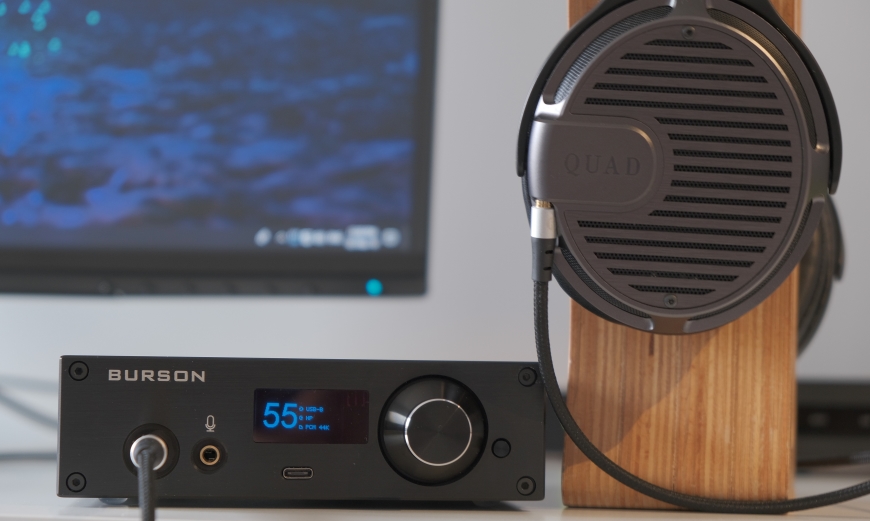
Build Quality
Fit and finish is quite good. Playmate is being offered in a black anodized aluminum case – called Noir or in a raw aluminum case called Everest. I have the noir version; anodized version will likely resist few accidental drops or scratches.
Device itself is pretty small and lightweight, at about 1.5kg and having just 210mm x 145mm x 45mm in size its very easy to integrate into tight spaces and small offices.
The aluminum case works as a giant heatsink so it gets warm at touch after about 20 min of run time, its warm but never hot since the amplification stage doesn’t dissipate as much power and heat compared to an integrated amp for example.

Inputs and Outputs
There are two digital inputs on the back, more exactly an USB type-B, an optical input and on the front, there is a second USB input – Type-C in case your smartphone supports OTG external devices. On the back Playmate can be powered by the external PSU or by your PC PSU (via the 4 pin molex connector), there’s an On/Off switch and a pre-amp output, at about 83 volume Playmate will output around 2 – 2.1 V Rms in case you want to use it as a dedicated DAC.
On the front plate there’s one 1/4” (6.5mm) headphone output, one 1/8” (3.5mm) mic input, an LCD screen, a digitally controlled volume potentiometer and the menu button.
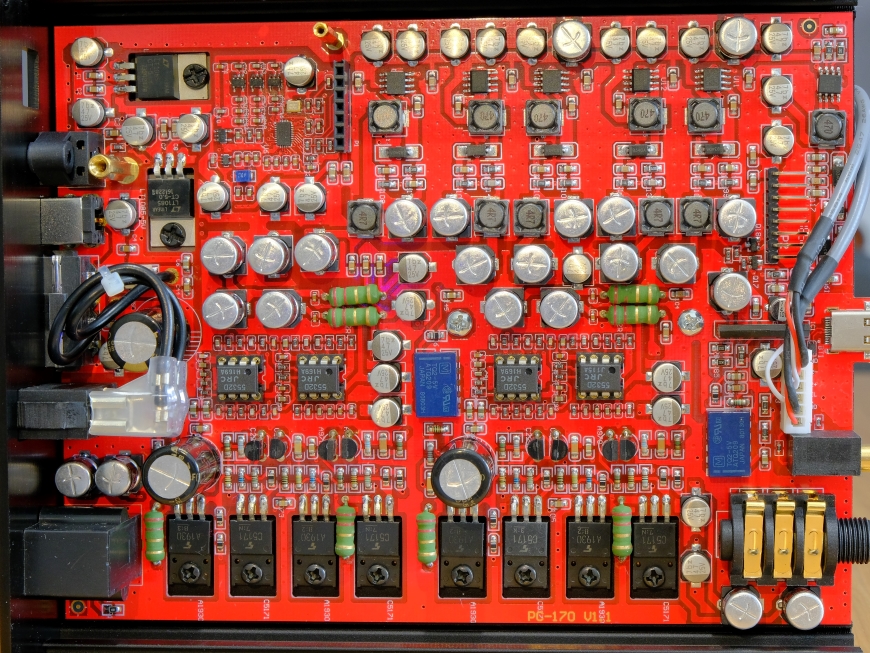
Under the hood
Playmate is again an all-in-one solution not only for audiophiles, but also for the gamers in you.
It has a quite small footprint, as the Play, it can be integrated inside your desktop PC in place of a 5.25” drive bay. You have two options when it comes to powering up the Playmate: using its external SMPS power supply or using a molex connector from your PC power supply. Do note that in case you are powering it with your PC PSU, Playmate will drain 12V and up to 5A of power (roughly 60W at full power), you’ll need a powerful PC PSU, so keep that in mind.
I don’t have a drive bay on my desktop Aurora 7 so I used it as an external device, which I sincerely recommend you doing the same, not because you’ll stress your PC PSU too much, but mostly because you will rule out all electromagnetic fields and interferences inside your PC case. Noise free is the only way to go if you serious about your final result.
Probably one of the most notable changes is the upgraded DAC chip, the veteran ES9018 was used by Burson since Conductor V1 (2012!) until Burson Play (2018!) was replaced by a much newer and much more impressive ES9038 DAC chip. Unfortunately, it is not the PRO version, ES9038Q2M is a mobile version of the famous ES9038PRO. Both are currently benchmarks in terms of commercial made (non-custom) DAC chips around the globe.
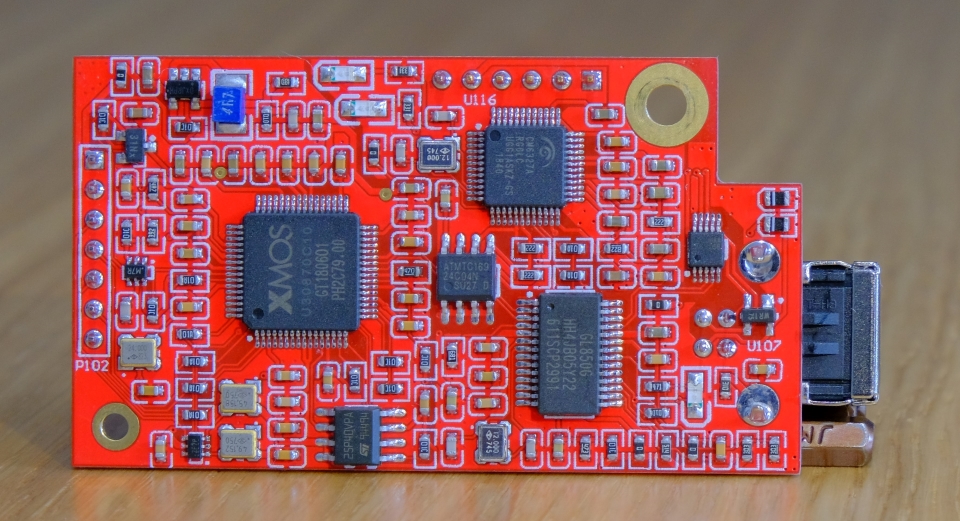
On the removable USB card, a powerful USB transporter can the spotted: XMOS XU-208 – I’ve seen this particular chip in much more expensive designs, even my own 1800 USD Matrix X-Sabre Pro is using it, which I find interesting. I didn’t have any hiccups, weird noises, or any interferences using the Playmate via USB, so that is a very good sign in my book.
It is a pleasure to spot the best capacitors in the business, Elna Silmic audio grade caps are literally everywhere, they are most probably used at PSU or noise filtering, since none of them are in the signal path!
Toshiba discrete transistors can also be spotted, Dale military grade transistors…what can I say, Burson didn’t waste a dime designing this interesting piece of audio gear.
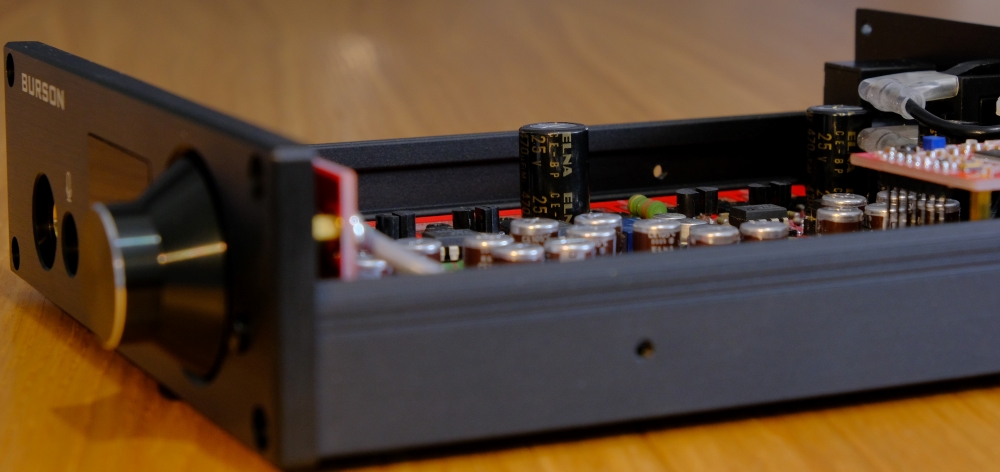
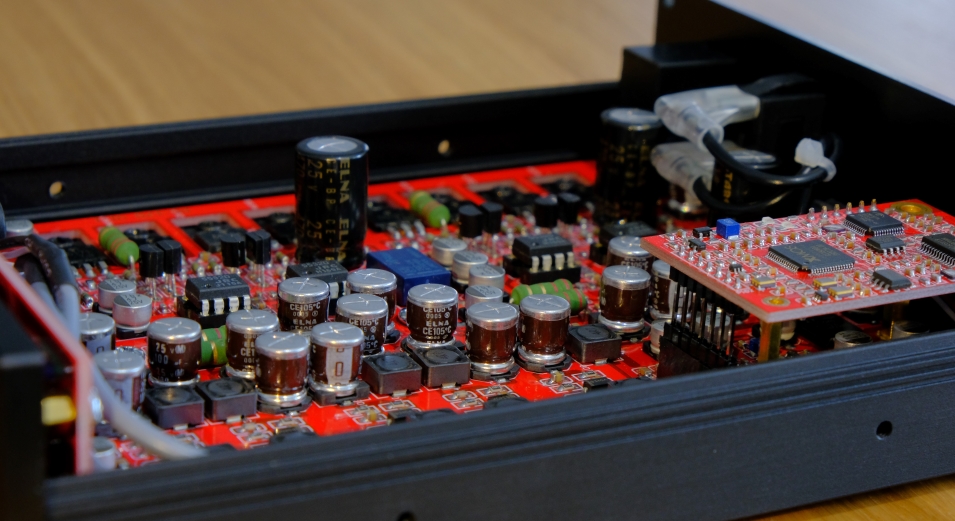
As the Play and Fun before it, Playmate is using a Burson made Max Current Power Supply. This proprietary MCPS overcomes the issues of both transformer based linear power supplies and conventional switching power supplies. These MCPS are tuned to work in Class-A for that intoxicating black as night background.
Playmate has four rollable op-amp sockets, I’m having the basic version with four NE5532 dual op-amps, all those four can be changed to your liking, Burson is also offering their own V6 Classic and V6 Vivid flavors. The most pimped-up Playmate is roughly twice the price of the basic version. Want the best? Smash that piggy bank for it!
I’m really glad Burson opted for an LCD screen on the front panel, it not only shows your volume levels, but also your selected output (headphone out or pre-amp out) and your digital stream (PCD or DSD and bitrate). Pushing the small button on the far right enters the menu where lots of setting can be accessed.
Now, I’d like to call out the biggest improvement in terms of ease of use and accessibility Burson made to make it much better.
- In that menu you can select 3 digital inputs (YES, 3 – compared to just 1 on the Play), you have your USB type B on the back, USB Type-C on the front panel – in case you want to connect your smartphone via OTG and an optical input – it is God sent, really! You can connect your receiver, your home console, anything you want.
- Selectable Gain! On the low gain my IEMs worked like a charm, no noises, no hum, no nothing. Why Play didn’t have this? We’ll never know.
- You can select your output: headphone output or pre-amp output. Not a must have setting for me, but what the heck, it’s there and it works.
- Selectable digital filters. ESS Technologies implemented on the hardware level few digital filters in their upper range DACs – in case you want to have different sound flavors. Burson was kind enough to implement them in their Playmate for us to play with…I will not list all of them, but I will say that there is a slight sound difference between them, I prefer LP Fast by a small margin and left it as it is for the rest of our tests.
- DPLL for DSD and for PCM data streams, the higher this setting is – the higher the jitter rejection will be, it stays on High in the default setting.
- Emphasis – this is the only setting I wish Burson never implemented. Nothing is wrong by putting it there, however on default “ON” position, Playmate will cut the treble response by 5dB at 10 kHz and around 8dB at 20 kHz! That is way too much. I know Burson loves that bass and midrange presence a lot, but cutting that treble by 5db can be too much at times. Be warned, this setting Is enabled by default, I recommend switching it off immediately.
All these settings were missing on Play, so thumbs-up for team Burson for keeping their word and implementing all those must-have settings that will make our life easier.
Let’s get to the most interesting part, shall we?
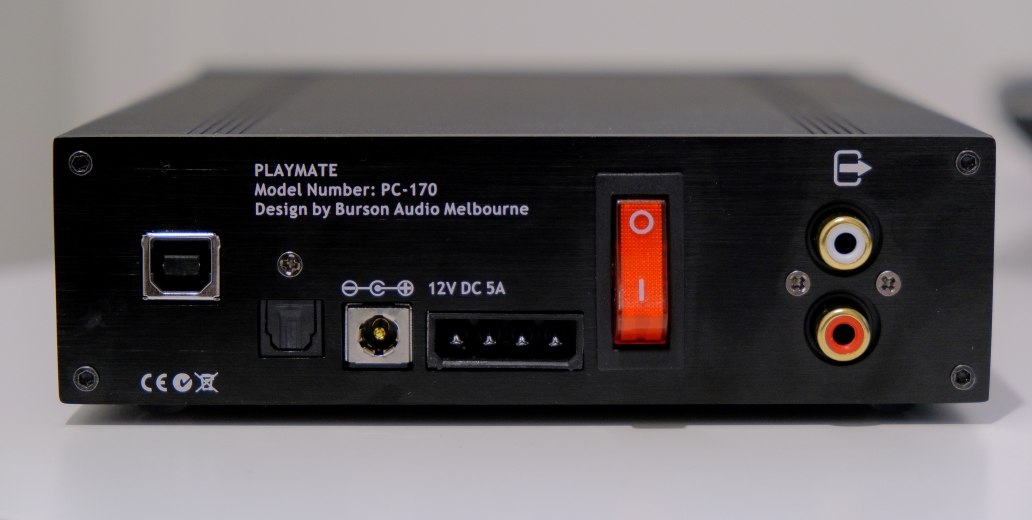
Sound Impressions
I. Big Improvements
First and foremost I would like to mention key aspects where I feel Playmate was much improved compared to Play in terms of usability and sound performance.
1. Playmate can now be used with IEMs – a thing that was almost impossible with the Play.
Playmate has a very convenient gain setting in the OSD menu, putting it on low is a Godsend for every IEM user. You have a much wider volume gap to play with and there is no hum or noise whatsoever. Background noise is nowhere to be found and background seems to be black as night even with multi-driver balanced armatures.
2. Playmate has lower output impedance.
Headphone output impedance was lowered from 8 Ohms to just 2 Ohms or below. I am hearing much more control with my IEMs, bass is no longer flabby with long decays, it is faster and more precise. A lower impedance output improved almost everything, transient response is first on the list and I am happy to hear a clearer image overall compared to Play.
3. Playmate is offering more power for higher impedance headphones.
With your typical low impedance headphones, the difference is negligible between the two. However, for 100 Ohm or higher impedance headphones, Playmate will be offering more juice. I could drive a pair of very inefficient 200 Ohm Audeze LCD-4 with both of them, however with Playmate I have a little bit more headroom and dynamics. More power and dynamics for the same price? Pretty please, I’m all for it.
There are also many smaller improvements that I would like to mention separately.

II. Improvements (without the Big):
Moving on from the old and trusty ES9018 DAC chip to a higher performance ES9038Q2M resulted in serious changes in the overall sound performance.
I always felt that ES9019 is a pretty good chip, but very hard to implement the right way. There are multiple designs where I felt it sounded bright and even fake. That is exactly what I don’t want to hear in my room: Fake midrange and hot treble. To some degree Conductor V1 (the one with the ES9018 inside) was like that.
ES9038 is completely another story, a merrier one. I never heard an ES9038 based design that had fake midrange or very hot treble and that is good thing.
You can screw up an ES9018 based design very easily, but you cannot with an ES9038 inside, it is just much more stable, has a better jitter rejection and doesn’t need as much power filtering (how ES9018 needed).
In my opinion there is a very clear difference in the overall sound performance from Play to Playmate. Playmate sounds even more natural, has a (much) better flow, everything just comes easily towards the listener.
Playmate is the complete opposite of digitus! ES9038 directly impacted the linearity of Playmate since it no longer has a very linear frequency response; it is more on the warmer side of things. Not by much, but there is no denying the warmness I am hearing.
Think of it like a very high-performance tube-based design, if this makes any sense to you. Playmate has still a very solid-state sound, but it also has some flow that you rarely hear on any SS (solid state) designs.
Playmate has a great midrange presence. I am starting with midrange because I feel this is the best part where I think Playmate really shines.
String based instruments have a very mood lifting zing to them, the texture of those notes appears natural and real to me. It was a pure joy listening to any instrument-based recordings.
Voices have slightly longer decays, that make you appreciate those cords vibrations just a little bit more.
Headphones that are lacking in midrange presence will partner great with this Playmate. Even my Sennheiser HD660S that are good but not great in the midrange department shined on Playmate, every point where HD660S lacked was cured by the Playmate, this was a great pairing.
The overall sub-bass and bass performance is very similar to the one on the Play, and that is a good thing.
Playmate has a good sub-bass performance, with the right headphones (Quad ERA-1) I am hearing rumbling deep bass that almost shakes my head. Playing Invisible Sun by The Prodigy at the 00:40 mark a very low 20 Hz note can be heard only on select headphones, sources and amplifiers. Playmate passed the test pretty easily.
On other test tracks by Infected Mushroom I’ve heard multiple bass layers that are always welcomed.
There is an elevation between mid and upper bass, from 80 up to 200 Hz there is a clear emphasis in this area so almost all modern recordings will have a slight bloom. Throw any EDM, Hip-Hop or electronica and Playmate will just shine.
Treble performance is good but not excellent. Unfortunately, the bite I was hearing on Play is not so obvious anymore. Playmate is calmer in this area and upper leading edges cannot be found on Playmate. That is one of the very few things that bothered me a bit.
The second least impressive aspect is that transient response was also affected. By comparison Play sounds a bit faster and hits harder (only on high impedance headphones!)
It’s noticeable especially on cymbals and double drums where Play rendered them just fine, but on Playmate there is a bit of muddiness (or mushiness) as it is not keeping up with double drums.
These are literally the only two things that bothered me when I was evaluating the Playmate.
Do note, I have the Play and Playmate in stock forms, maybe V6 upgraded ones will sound different.
Soundstage size is medium to wide, with Quad ERA-1 and HD660S it sounds wider than Play and on the same level with Fun, I appreciated the wide stage on few classical pieces.
Depth is also good and pretty much in a higher tier league comparing to other devices in the same price range (Matrix Mini-I Pro 2, Gilmore Lite mk2).
Comparisons
Well, as you can see my whole review became a big comparison between the Play and Playmate so it doesn’t make any sense to compare the two anymore from this point on. Bottom line Playmate is much better, go for it instead.

Burson Playmate VS Headamp Gilmore Lite Mk2
Playmate costs 400 USD and Gilmore Lite goes for 500 USD so there’s that, Gilmore Lite also doesn’t have a DAC section, so I call it a fair comparison.
I connected the Gilmore Lite to the Playmate pre-amp output and set the volume at 83 for a 2.1 V output.
First of all, it seems that Playmate has A LOT more power and will drive literally everything, if it drives my LCD-4, then it drives anything you want. Gilmore Lite starts clipping at around 90% volume, sadly it can’t drive my LCD-4.
Playmate has a warmer sound signature that stays on the safer side on things, you can hook it up with a wider range of headphones.
Gilmore Lite is basically a wire with gain, it almost disappears from your audio chain, if you don’t like your headphones, Gilmore Lite will make them even worse. On the other side, Gilmore Lite will sound truer to life and to the recording, it is truly a reference single ended headphone amp. It is so linear that most of the time you will hear your source and your headphones and not a coloration induced by the amp.
Gilmore Lite also has a faster transient response, it’s always nimble and light on feet, for faster music Gilmore wins most of the times.
Now, in terms of tonal balance and overall enjoyment levels I would say Playmate is better and a smile will appear more often with it. Gilmore Lite can be boring sometimes, especially if the listening music is also boring and un-engaging.
For Gilmore Lite you will need a separate DAC box, so keep that in mind.
There is no point in comparing the Playmate with a Matrix Mini-I Pro 2 since I think the later one can’t properly drive full-sized headphones and doesn’t have a real and well-designed headphone output.
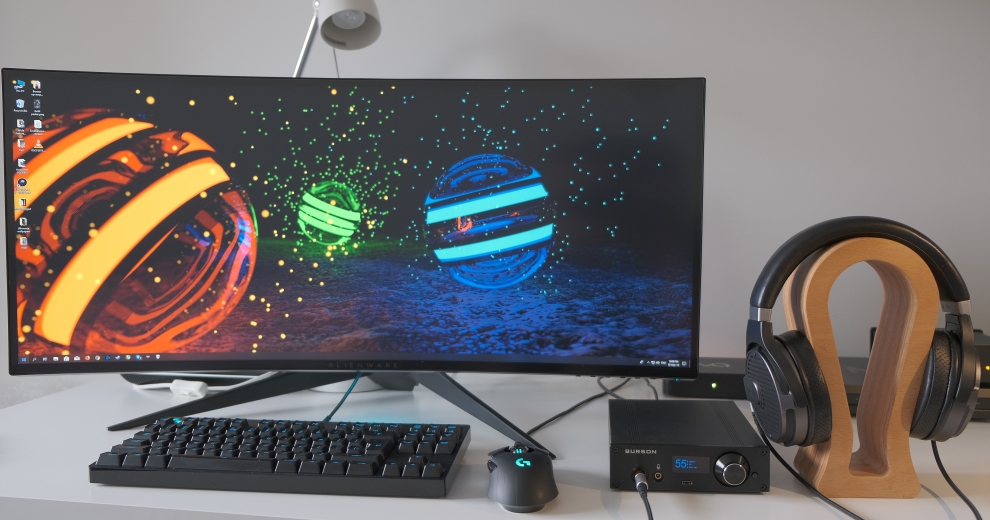
Conclusions
All my requests that I urged Burson to make with their Play and many other requests were carefully listened. This is how you are listening to the community and make a logical move, well done team Burson.
I think at this very moment Playmate doesn’t have a real competitor that can drive literally every headphone you throw at it, offer multiple digital inputs, selectable filters or many other features.
For a simple desktop solution used to play music, recording or gaming Burson Playmate seems to be my top pick for 2019. It was very impressive with all my headphones and IEMs.
PROS:
- Great tonal balance across FR
- Great flow and easiness
- Good kick and impact
- Awesome headphone amp section
- Good depth and a wide soundstage
- Awesome features & lots of improvements
- Best price to performance ratio tested in a DAC/Amp category
CONS:
- Slight muddiness on treble
- Not the cleanest treble response
Associated Equipment
- Headphones: Audeze LCD-4, Quad ERA-1, Sennheiser HD660S, Momentum 2, FiiO FA7, FH5
- DAC: Matrix X-Sabre Pro with X-SPDIF 2, Matrix Mini-I Pro 2, Burson Play, Burson Playmate
- Headphone Amps: HeadAmp Gilmore Lite Mk2, Burson Play, Burson Playmate
- Speakers: KEF LS50W
- Cables: QED Reference, Burson Cable+ PRO, Audioquest & Kimber interconnects







